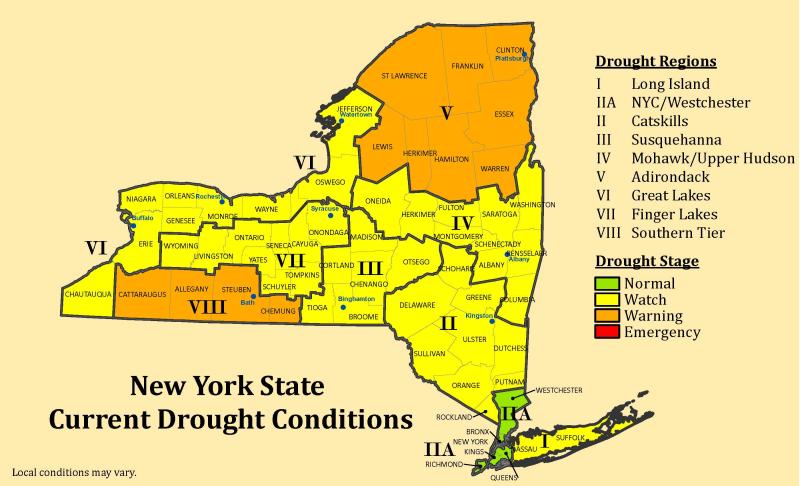
Syracuse, N.Y. (NCC News) — Central New York, long considered a climate refuge, is experiencing its worst drought in more than 20 years, raising questions about whether the region can live up to its ‘climate haven’ reputation.
“They’re going to have the least horrific consequences of climate disasters,” said Alexandra Scrivner, an expert in climate transitions and a Syracuse University employee and former PhD student. Syracuse is one of those regions that is expected to be habitable after some of the projected effects of climate change have struck.
This fall seems to be showing a worrying sign, despite the hopeful projection for the region. New York State is undergoing a significant drought that has left farmers in a tough spot. According to meteorologists, it would require five to seven and a half inches of rain in the next 30 days to rectify the situation. Following a very hot summer, if conditions don’t rapidly improve, that designation could quickly shift.

“Farmers need state and federal support to survive (drought and climate change) … They are just a really vulnerable community, along with other vulnerable communities that we see (affected) from climate change,” Scrivner said.
If the drought was not enough to negatively impact local farmers, many have lost large amounts of federal funding under the Trump administration. Grants have been eliminated simply because their title includes the word “climate change.”
Scrivner says that drought in a region that is supposed to be better off climate wise, such as Central New York, likely means that there is a more severe drought somewhere else. That can significantly limit what foods and vegetables are available to people in certain parts of the world.
Limited supply drives up produce prices, making fresh fruits and vegetables unaffordable for low-income households.
As more farmers struggle to stay profitable and conditions continue to worsen, Scrivner said, “It’s no longer an economic question—it’s a livelihood question.”
According to Scrivner, the concern for many revolves not around simply the lack of investment, but the potential pollution that could arise from the continuous development. That may be some hold over trauma from the long effort that the city of Syracuse has undertaken to clean up Onondaga Lake. The lake was heavily polluted from chemical production plants over the course of several years. That was decades ago, and parts of the lake have just recently been cleared to swim in again.
There is of course the potential this is another outlier year in a string of recent outliers. But the research suggests otherwise. “Everyone is scared about what could happen with the water from these industries,” Scrivner said.
